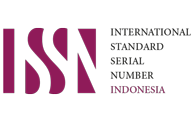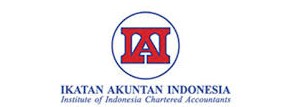Financial Statement Fraud Detection Using the Fraud Triangle Theory: A Study of an Indonesian Healthcare Company Listed on The Indonesian Stock Exchange In 2021-2023
Abstract
This study investigates the influence of the fraud triangle on financial statement fraud, focusing on pressure (financial stability and financial target), opportunity (nature of industry and ineffective monitoring), and rationalization. The research sample comprises healthcare companies listed on the Indonesia Stock Exchange (IDX) from 2021 to 2023. Using a purposive sampling method, 26 healthcare companies were selected for analysis. The study employs logistic regression as the analytical method, incorporating the overall model fit test, Hosmer and Lemeshow test, goodness-of-fit test, and classification matrix analysis. The findings reveal that financial targets and the nature of the industry positively impact financial statement fraud, whereas financial stability, ineffective monitoring, and rationalization do not exhibit significant effects.
References
Abdullahi, R., & Mansor, N. (2018). Fraud prevention initiatives in the Nigerian public sector: Understanding the relationship of fraud incidences and the elements of fraud triangle theory. Journal of Financial Crime, 25(2), 527–544. https://doi.org/10.1108/JFC-02-2015-0008
ACFE. (2016). Report to the nations on occupational fraud and abuse 2016. Report to the Nations, 1–92.
Achmadiyah, T., Hidayat, A. T., Fraud, F. S., & F-score, M. (2023). Pengaruh Fraud Triangle Terhadap Financial Statement Fraud Pada Perusahaan Bumn Yang Terdaftar di Bursa Efek Indonesia (BEI) Tahun 2019 – 2022. Association of Certified Fraud Examiners (ACFE) Indonesia Chapter. (2019). Survei Fraud Indonesia 2019. Acfe Indonesia, 72., 7(1), 47–59.
Amaliah, B. N., Januarsi, Y., & Ibrani, E. Y. (2015). Perspektif fraud diamond theory dalam menjelaskan earnings management non-gaap pada perusahaan terpublikasi di Indonesia. Jurnal Akuntansi & Auditing Indonesia, 19(1), 51–67. https://doi.org/10.20885/jaai.vol19.iss1.art5
Aprilia. (2017). Analisis Pengaruh Fraud Pentagon Terhadap Kecurangan Laporan Keuangan Menggunakan Beneish Model Pada Perusahaan Yang Menerapkan Asean Corporate Governance Scorecard. Jurnal ASET (Akuntansi Riset), 9(1), 101. https://doi.org/10.17509/jaset.v9i1.5259
Association of Certified Fraud Examiners (ACFE). (2018). Report To the Nations 2018 Global Study on Occupational Fraud and Abuse.
Chigozie, N. (2022). Overview of the concept of fraud in the nigeria banking system. 31–38.
Chimonaki, C., Papadakis, S., & Lemonakis, C. (2023). Perspectives in fraud theories – A systematic review approach [ version 1 ; peer review : awaiting peer review ]. 1–18.
Darmawan, A., & Saragih, S. (2017). The Impact of Auditor Quality, Financial Stability, adn Financial Target for Fraudulent Financial Statement. Journal of Applied Accounting and Taxation, 2(1), 9–14.
Demetriades, P., & Owusu-Agyei, S. (2022). Fraudulent financial reporting: an application of fraud diamond to Toshiba’s accounting scandal. Journal of Financial Crime, 29(2), 729–763. https://doi.org/10.1108/JFC-05-2021-0108
Doan, T. N., & Ta, T. T. (2023). Factors of Fraud Triangle Affecting the Likelihood of Material Misstatements in Financial Statements: an Empirical Study. Journal of Governance and Regulation, 12(1), 82–92. https://doi.org/10.22495/jgrv12i1art8
Hasanaj, P., & Kuqi, B. (2019). Analysis of Financial Statements. Humanities and Social Science Research, 2(2), p17. https://doi.org/10.30560/hssr.v2n2p17
Herdjiono, I., & Kabalmay, B. N. (2021). Can the Fraud Triangle Detect Financial Statement Fraud? An Empirical Study of Manufacturing Companies in Indonesia. Journal of Corporate Finance Research, 15(3), 28–38. https://doi.org/10.17323/j.jcfr.2073-0438.15.3.2021.28-38
Huang, S. Y., Lin, C. C., Chiu, A. A., & Yen, D. C. (2016). Fraud detection using fraud triangle risk factors. Information Systems Frontiers, 19(6), 1343–1356. https://doi.org/10.1007/s10796-016-9647-9
Kazimean, S., Said, J., Nia, E. H., & Vakilifard, H. (2019). Examining Fraud Risk Factors on Asset Misappropriation : Evidence from the Iranian Banking Industry. Journal of Financial Crime - Emerald Insight, 24(2), 242–255.
Meihendri, Yunilma, Rifa, D., Nurhuda, Irda, & Tasrif, S. M. (2022). The effect of financial stability, financial targets and rationalization on financial statements fraud. Journal of Contemporary Accounting, 4(3), 169–178. https://doi.org/10.31838/jcr.07.06.121
Narsa, N. P. D. R. H., Afifa, L. M. E., & Wardhaningrum, O. A. (2023). Fraud triangle and earnings management based on the modified M-score: A study on manufacturing company in Indonesia. Heliyon, 9(2), e13649. https://doi.org/10.1016/j.heliyon.2023.e13649
O’Brien, B. (2024). The Fall of a Giant: How Evergrande’s Liquidation is Impacting China’s Economy. International Relations Review. https://www.irreview.org/articles/the-fall-of-a-giant-how-evergrandes-liquidation-is-impacting-chinas-economy
Olakunle ACA, A. T., & Ebenezer, O. O. (2021). Determinants of Fraudulent Financial Reporting in Nigeria: Integrating Fraud Triangle Theory Elements. International Journal of Research and Innovation in Social Science, 05(12), 288–297. https://doi.org/10.47772/ijriss.2021.51217
Owusu, G. M. Y., Koomson, T. A. A., Alipoe, S. A., & Kani, Y. A. (2022). Examining the predictors of fraud in state-owned enterprises: an application of the fraud triangle theory. Journal of Money Laundering Control, 25(2), 427–444. https://doi.org/10.1108/JMLC-05-2021-0053
Puspitaningrum, M., Taufiq, E., & Wijaya, S. (2019). Pengaruh Fraud Triangle Sebagai Prediktor Kecurangan Pelaporan Keuangan. Jurnal Bisnis Dan Akuntansi, 21(1), 77–88. https://doi.org/10.34208/jba.v21i1.502
Rachmania, A. (2017). Analisis Pengaruh Fraud Triangle Terhadap Kecurangan Laporan Keuangan Pada Perusahaan Makanan dan Minuman Yang Terdaftar di Bursa Efek Indonesia Periode 2013-2015. 1–19. https://repository.upnjatim.ac.id/6042/
Rahman, A., & Nurbaiti, A. (2019). Analisis Faktor-Faktor Yang Mempengaruhi Kecurangan Laporan Keuangan Dalam Perspektif Fraud Pentagon (Studi pada Perusahaan Sektor Infrastruktur, Utilitas dan Transportasi yang Terdaftar di Bursa Efek Indonesia Tahun 2016-2017). Journal Accounting and Finance, 3, 34–44. http://scioteca.caf.com/bitstream/handle/123456789/1091/RED2017-Eng-8ene.pdf?sequence=12&isAllowed=y%0Ahttp://dx.doi.org/10.1016/j.regsciurbeco.2008.06.005%0Ahttps://www.researchgate.net/publication/305320484_SISTEM_PEMBETUNGAN_TERPUSAT_STRATEGI_MELESTARI
Rahman, M. J., & Jie, X. (2024). Fraud detection using fraud triangle theory: evidence from China. Journal of Financial Crime, 31(1), 101–118. https://doi.org/10.1108/JFC-09-2022-0219
Sabatian, Z., & Hutabarat, F. M. (2020). the Effect of Fraud Triangle in Detecting Financial Statement Fraud. Jurnal Akuntansi, 10(3), 231–244. https://doi.org/10.33369/j.akuntansi.10.3.231-244
Sánchez-Aguayo, M., Urquiza-Aguiar, L., & Estrada-Jiménez, J. (2022). Predictive Fraud Analysis Applying the Fraud Triangle Theory through Data Mining Techniques. Applied Sciences (Switzerland), 12(7). https://doi.org/10.3390/app12073382
Santosa, S., & Ginting, J. (2019). Evaluasi Kakuratan Model Beneish M-Score Sebagai Alat Deteksi Kecurangan Laporan Keuangan (Kasus Perusahaan Pada Otoritas Jasa Keuangan di Indonesia). Makalah Ilmiah Bijak, 16(02), 74–84.
Shahzadi, K., Alim, W., & Khan, S. N. (2024). Do the fraud triangle components fuel complex financial fraud? A study of nonfinancial firms in Pakistan. Journal of Financial Crime. https://doi.org/10.1108/JFC-10-2023-0270
Sidik, S. (2024). BPK Temukan Penyimpangan Keuangan Indofarma, Rugikan Negara Rp 371 M. Katadata.Co.Id. https://katadata.co.id/finansial/korporasi/664b0ecf376c6/bpk-temukan-penyimpangan-keuangan-indofarma-rugikan-negara-rp-371-m
Skousen, C. J., Smith, K. R., & Wright, C. J. (2009). Detecting and Predicting Financial Statement Fraud : The Efectiveness Of The Fraud Triangle and SAS No.99. 99, 53–81. http://ssrn.com/abstract=1295494Electroniccopyavailableat:https://ssrn.com/abstract=1295494Electroniccopyavailableat:http://ssrn.com/abstract=1295494Electroniccopyavailableat:https://ssrn.com/abstract=1295494
Tiffani, L., & Marfuah, M. (2015). Deteksi financial statement fraud dengan analisis fraud triangle pada perusahaan manufaktur yang terdaftar di bursa efek Indonesia. Jurnal Akuntansi & Auditing Indonesia, 19(2), 112–125. https://doi.org/10.20885/jaai.vol19.iss2.art3
Wahyudi, & Budiwitjaksono, G. (2017). Fraud Triangle Sebagai Pendeteksi Kecuranganlaporan Keuangan. Jurnal Akuntansi, XXI, 47–61.
Widarti. (2015). Pengaruh Fraud Triangle Terhadap Deteksi Kecurangan Laporan Keuangan Pada Perusahaan Manufaktur Yang Terdaftar Di Bursa Efekindonesia (BEI). Jurnal Manajemen Dan Bisnis Sriwijaya, 13(229–244).







.png)
.png)
